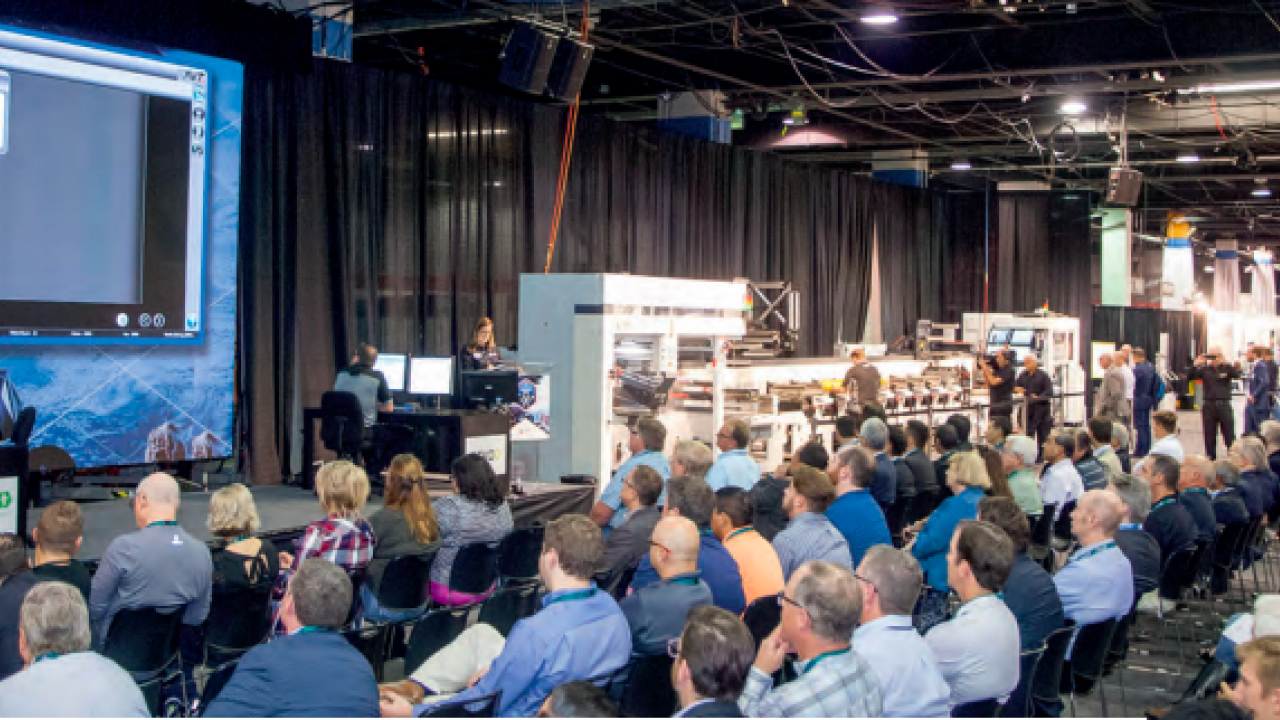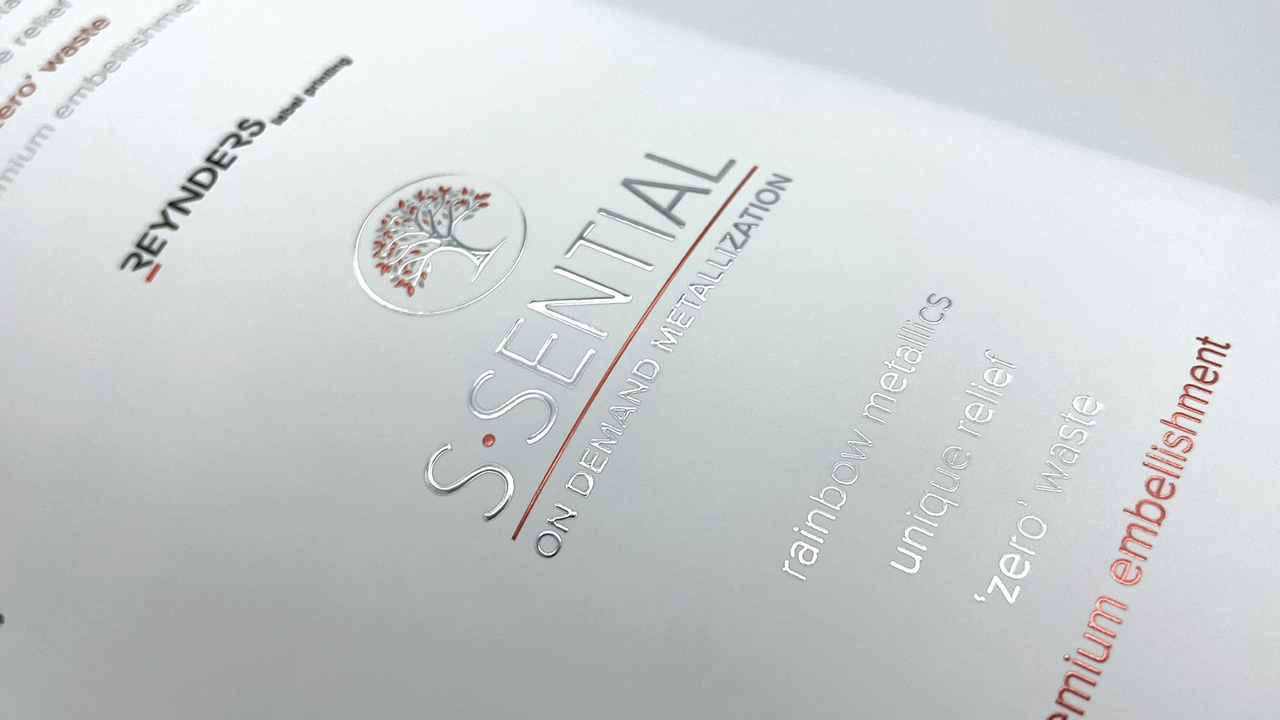Industry predictions for 2019

‘With the aim to improve performance and accelerate sustainability, we anticipate the growth of 2018 to be lower than 2017 in terms of printed square meters,’ says Jakob Landberg, director, sales and marketing, Nilpeter. ‘Converters are focused on replacing obsolete technology with highly efficient solutions, both conventional and digital. More and more turn their focus to niche areas, such as short-run flexible packaging and ECL, avoiding the downsides to commodity printing, creating a huge market for modern technology with multi-substrate and application capabilities.
‘The borders between different product decoration techniques will disappear, and narrow web converters will continue to increase their abilities and offerings in a large number of applications, such as self-adhesive labels, in-mold, tube laminates and shrink sleeves. We also predict that inkjet hybrid solutions, personalization and event-specific labeling and decoration will gain an even stronger position and additional market share.’
Andrew Siwicki, general manager at QLM Label Makers (Australia), identifies: ‘Label converters in Australia feeling the pressure from sustained increases in operating costs and raw materials may start to see the impact on growth and profitability.
‘Combine this with the demands of investment in new technology and we could potentially see more companies leave the industry or consolidate with others.’
Siwicki further notes, ‘a growing demand for direct engagement between convertors and brand owners as companies seek to reduce costs and gain a better understanding of which innovations and print technology they can utilize.
‘Convertors with flexible or hybrid platforms seem best positioned to provide brand owners with the solutions they require for fast-changing market conditions and growing numbers of SKUs.’
Gary Seward, managing director at Pulse Roll Label Products, says: ‘As the industry continues to embrace and invest in digital printing technology alongside conventional flexo printing presses, we see a key challenge for printers to match the print quality and brand colors irrespective of the printing process.
‘Closed-loop color management will become one of the keys to success in making label printers more competitive. By closing the loop, converters can guarantee that, no matter which press a job is printed on, or whether it’s flexo or digital, the print will match proof every single time. This offers significant flexibility to brand owners and retailers who can choose the most suitable print process whilst at the same time be confident that their brand colors will be reproduced accurately. This surely will be the next big trend in bringing flexo and digital more seamlessly together.’
Print process
Federico D’Annunzio, strategic products marketing director, web-fed, Bobst, supports this view and says: ‘Maintaining the level of perceived quality that strongly influences the purchasing behavior of consumers is paramount for brand owners, hence the need to satisfy the requirements of color and quality consistency of the printed output and of repeat jobs in order to achieve 100 percent product quality conformity with the job master request. Conformity on a global scale can be achieved through the digitalization of the workflow which improves the process repeatability and consistency and is independent from human error. This means that the type of print process will become less relevant by comparison to the digitalization of the printed output, which can ensure a full control of all the variables. This will lead to a standardization of the printing systems towards processes such as the extended color gamut, towards standard color separation systems sharing the same color space and the same print results.
‘Because the print results will be the same, irrespective of the system by which label or a packaging jobs are printed, the discriminating element for the choice of the print technology will be the economic value, namely the most economically efficient print system depending on factors relating to the type of job such as the run length, along with the local cultural value in terms of locally preferred printing method.’
For Andy Cook, FFEI managing director, hybrid press technology continues to advance. ‘We will see hybrid presses able to cover an even wider variety of work, reduce waste and increase consistency per job,’ says Cook. ‘These trends will lead digital hybrid systems to dominate the medium run length market, especially now inkjet speed is approaching a level that’s comparable to traditional flexo.’
He notes other drivers for this beyond printing speed. ‘Hybrid presses can provide a lower operational cost than either traditional or pure digital, particularly when combined with AI systems for control. In addition, automation is key to reducing waste and improved consistency – automatic changeovers, automatic set-up pressure, registration, automated recall of set-ups for specific substrates – maximizing uptime and deskilling operators.
‘We are seeing a growing number of other processes fall in the scope of digital print – inkjet varnish, inkjet foiling, inkjet screen white alternatives. With a drive on productivity and added value, more hybrid solutions will have digital embellishment and finishing options, including single purpose print bars. Converters will fuel this as they increasingly look for digital solutions to application “problems” – rather than digital solutions looking for an application problem to solve.
‘Furthermore, we are seeing digitalization of traditional technologies. Press set-up has gone from nearly 30 minutes to just a couple of minutes with only a few meters of waste. The devices are highly automated, sophisticated, easier to maintain and most importantly interconnected to management systems and support systems.’
Sustainability
2018 has witnessed unprecedented pressure on the supply chain for greener, more sustainable options. A number, from UPM Raflatac and H.B. Fuller to Constantia Flexibles, have signed up to support the New Plastics Economy Global Commitment.
Dr Thomas Baumgärtner, managing director and Self-adhesive Materials division head at Herma, says: ‘Sustainability is not a fad but rather a basic attitude that we are seeing more and more in our direct customers, label printers, but also in label users. Next year, the EU will continue to exert its influence to decrease the huge mountains of plastic waste in the world’s oceans. Plans include blanket bans on various plastic products as well as drastically increased recycling quotas. Both topics will certainly affect our industry in 2019 and beyond, generating many discussions.
‘Linerless labels will certainly play an increasing role in the market in the future. By eliminating the liner, these labels can be used without leaving behind any residual materials. There are great potentials waiting to be tapped in conventional labels, too.
‘Even today, end users are already increasingly interested in the origin and recyclability of packaging, for instance in natural cosmetics, in fruit and vegetable packaging, and in all products in the burgeoning organic sector. Biodegradable, compostable materials thus become interesting alternatives to petroleum-based polymer substrates.
‘However, the main challenge will be making not only the products themselves more sustainable, but also the production processes. I am certain that we will discuss and push forward the idea of intelligent networking – such as the Internet of Things – under this aspect over the next years.’
Matt Francklow, managing director at Creation Reprographics, adds: ‘Sustainable packaging isn’t just the production of renewable, recyclable or eco-friendly materials – it covers a whole range of design and production choices. Through 2019 and beyond we predict awareness of this will continue to increase amongst consumers, brand owners and suppliers as the industry begins to take a holistic, sustainability-focused view of the packaging supply chain.
‘To tackle the complexities surrounding sustainable packaging development, businesses must address the efficiency of the pre-press process. Digitalization in the pre-press workflow process is vital for eliminating duplications, setbacks and errors. What was once a manual process and often required unnecessary repetitive back and forth can now be a fully automated pre-press workflow process. Complete digitalization of the pre-press environment is critical to creating competitive advantage, minimizing waste, and delivering speed to market for brands.’
Gillian Ewers, vice president of marketing at PragmatIC, identifies the reducing cost of implementing RFID/NFC technology on mass market goods as helping increase recycling and reduce waste.
‘A low-cost inlay, with a unique ID, could be added to product packaging allowing consumers to access localized recycling information with a simple tap of an NFC-enabled smartphone,’ she says. ‘To incentivize the consumer to recycle more, a smart recycling bin could count the number of items that are placed into it and give the consumer credits for how much is collected.
Thus, promoting positive behavior rather than the negative “Pay to Throw” schemes that propose to charge for the amount of unsegregated waste.’
Smart
Dr Nathalie Muller, CEO at Linkz, says: ‘Brands and consumers are becoming aware of connected print, which links to useful, entertaining or amazing content. The technology is all there, with many useful applications. For example, we can scan a label with thermochromic ink telling us whether a product is still safe to consume, whilst simultaneously logging where that product was produced and who transported it from where to where. 2019 will be the year that printers and customers will try and find out how easy and useful connected labels are.’
Simon Pugh, CEO at QLM Label Makers Group, affirms this view: ‘Consumers are increasingly being drawn to the capabilities of labels and packaging interacting with them via smart technology.
This will see greater use of augmented (and mixed) reality and 2D barcode technology to enhance a customer’s brand experience. This provides brands with enormous opportunities for direct engagement but also results in greater responsibility and transparency for claims of provenance and authenticity.’
‘By opting for solutions that harness technology to create an intuitive user experience reminiscent of a smartphone’s interface, businesses can empower employees to enhance efficiency,’ continues Laurent Lassus, general manager, Sato France. ‘We therefore predict an increase in highly-customizable, cloudconnected labeling solutions that allow business-specific content to be put directly in the hands of staff.
‘Looking further ahead, we predict the prevalence of voice activated technology in the home, such as intelligent assistants like Apple’s Siri and Amazon’s Alexa, will extend into business operations. Digital assistants and other voice activated technologies could be harnessed, for example in a label printer, to boost productivity, streamline processes and complement the work of human employees.’
Chris Ellison, managing director of OPM (Labels & Packaging) and the current Finat president, also sees a bright future for voice assistants in the supply chain. ‘A breakthrough of on-press AI and algorithm solutions will be the most important next step in label printing technology in 2019. We have Amazon’s Alexa and Google’s Home; maybe our assets will be able to take instruction via recognized voices and phrases?
‘Importantly, the integration of these now-commonplace AIs will bring machine learning and predictive capabilities onto our presses, enabling assets to personalize the printer’s experience. From the set-up of the press to training information and app preferences, these AIs will learn what you need and then configure the presses automatically. AI-enabled automation can streamline many kinds of repetitive tasks and in line with trends in manufacturing sectors, we will certainly see more of that evolution I hope in 2019.’
Click here to read the detailed article with more preditions.
Stay up to date
Subscribe to the free Label News newsletter and receive the latest content every week. We'll never share your email address.


